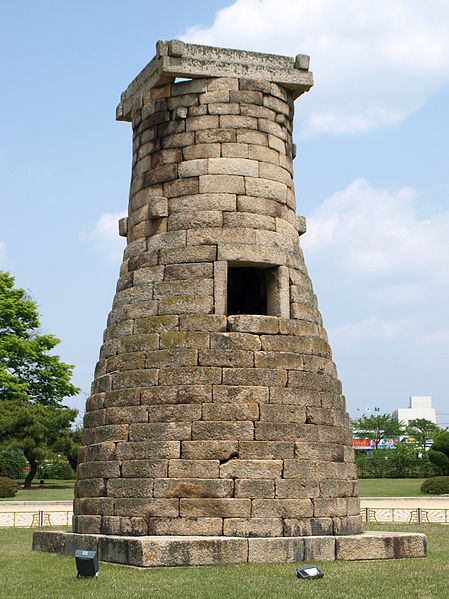
Cheomseongdae Observatory
Gyeongju National Park
Gyeongju, Korea
Constructed during the reign of Queen Seondeok (632-647), Cheomseongdae is the oldest existing astronomical observatory in Asia. It is 9.5m (31ft) tall. Its tower supports an observation platform that is accessible from the hollow interior. The platform deviates 16 degrees clockwise from the four cardinal directions.
The construction of Cheomseongdae encodes several pieces of astronomical knowledge, although this does not affect its practical use. To paraphrase Changbom Park (Astronomy: Traditional Korean Science, pp 63-65): The structure's 29 layers of stone correspond to the 29.5 days in a lunar month. The 27 layers of the round body represent the moon's orbital cycle of 27.3 days. The 12 layers of stones above and 12 layers below the window symbolize the 12 months of the year and the 24 seasonal divisions. The six lowest layers of the body consist of 16, 15, 15, 16, 16, and 15 stone slabs respectively. These represent the number of days between various important events in the Korean seasonal calendar, including the winter solstice, beginning of spring, and the spring equinox. Finally, 365 stone bricks in the structure (excluding six protruding stones and including one interior stone) represent the 365 days in the year.
As seen in this photo, the entrance is located halfway up the tower. It was accessed by an outside ladder (next page). Why was this done? See the following pages for an explanation.

